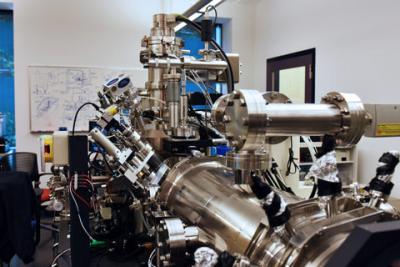Researchers at the Okinawa Institute of Science and Technology (OIST) have reported that using graphene film managed to drastically enhance the quality of electron microscopy images.

Electron microscopes rely on an electron beam (rather than light) to illuminate the target sample. The electron beam hits the sample, and the resulting scattering of the electrons allowing scientists to build an accurate image of the target. This newly developed, unique microscope does not even rely on optical lenses any longer, instead using a detector to reveal which electrons hit the tiny virus samples and reconstructing the image through a computer algorithm. Moreover, while conventional electron microscopes require high-energy electrons, this microscope focuses on low-energy electrons which can potentially be much more efficient at imaging viruses if the associated technical issues can be overcome.
A graphene film, however, is not so easy to handle. It is so clear that it needs to be spotless and free from any contaminants, leading the OIST scientists to develop a technique to meticulously clean the graphene film. There is also an issue with loading the virus sample onto the graphene film - it is oily, while biological preparations would typically be in water-based. They would not mix very well: if you just add the viruses onto the film, the results are viruses clinging together in scattered dense spots making it impossible to reveal individual details. To solve this second issue, the researchers resorted to using centrifugal force to scatter the viruses onto the entire surface of the film, preventing them from making clumps.
The outcome of all these efforts is higher resolution pictures of viruses' shells, whose shape and morphological details can provide clues on how to fight them. To demonstrate their successful work, OIST researchers used the bacteriophage T4, a well-known virus that attacks specific bacteria. Using graphene and a low-voltage electron beam enabled them to reveal minuscule details like the fiber-like limbs that the virus uses to hook onto its bacterial prey, previously invisible on a conventional carbon film.

The team is already working on the next step to further increase the quality of the images. To reconstruct images and to study the morphology of various types of specimen in the future, the ability to confidently compare microscopic images of biological materials at such a tiny scale require very high consistency between samples. To achieve this condition, the researchers are now developing a robust way to prepare the viruses by spraying them onto the graphene film in a sterile vacuum. Tiny viruses will not be able to hide out of sight for very much longer.